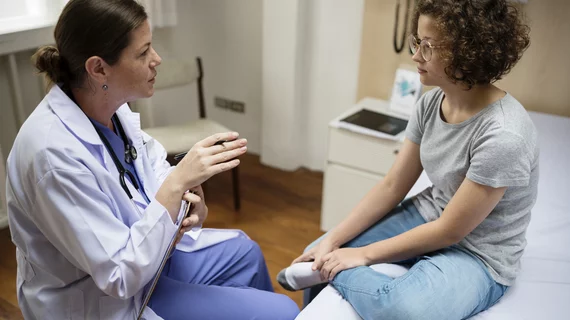How advanced practice providers could increase revenue in radiology
Though image-guided procedures have increased over the last decade, the presence of a radiologist has dwindled for some.
Image-guided thoracentesis and paracentesis both increased significantly from 2012 to 2018, but the instances in which these procedures were performed by radiologists decreased from 73.6% to 66.2% and 83.9% to 77.1%, according to a recent study published in the Journal of the American College of Radiology. The authors of the study examined the trends in procedural volumes and reimbursements, in addition to who most often conducts the two procedures.
Though radiologists continued to complete the majority of both exams since 2012, advanced practice providers’ (AAPs) share of these procedures has increased “dramatically,” especially with the utilization of image guidance.
“The most striking trend in this study is the dramatic increase in volume of these procedures performed by APPs, which approximately doubled over the study period,” corresponding author Rajoo Dhangana, MD, from University of Pittsburgh Medical Center, and co-authors divulged. “The great acceleration of this trend in the past decade, demonstrated in the present study, follows a national trend of increasing participation of APPs in clinical care, specifically in minimally invasive procedures.”
The study found that APP volume and share of image-guided paracentesis increased from 10.2% to 15.8%, and from 7.7% to 12.9% for thoracentesis, while Medicare reimbursement for both procedures has seen a reduction since 2012. These two findings combined led the authors to suggest that utilizing the skills of APPs for minimally invasive radiology procedures could represent a cost-savings strategy for practices.
“Such an APP practice could offer additional value beyond its low salary-to-compensation ratio by providing services in the evenings and weekends, thereby increasing efficiency and decreasing length of stay. Radiology physicians, already spread thin in many practices, likely could not offer these services in as efficient and cost-effective of a manner,” the authors pointed out.
Authors of the study acknowledged that using CPT codes as proof of who conducted a procedure could somewhat skew their metrics, though they suggested that this likely would have caused them to underestimate rather than overestimate APP volume.
Related radiology practice management content:
How radiology should prepare for AUC clinical decision support reporting requirements
Remote shifts boost radiologist well-being and dilute physician burnout

